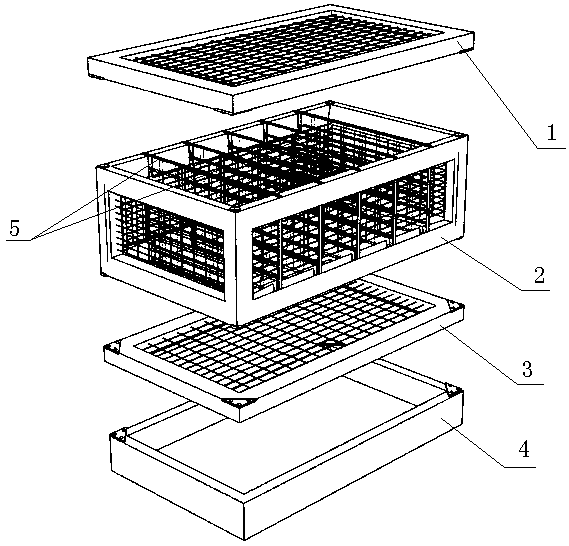Method of breeding trichogrammas with spilosoma menthastris
A technology of Trichogramma and Trichogramma, applied in the field of biological control of agricultural pests, can solve the problems of Trichogramma's intolerance to long-term storage, pressure on production space and production costs, and difficulty in popularization and application, achieving low cost and easy separation , the effect of broad market demand
- Summary
- Abstract
- Description
- Claims
- Application Information
AI Technical Summary
Problems solved by technology
Method used
Image
Examples
Embodiment 1
[0025] Production of Trichogramma rice borer and control of rice stem borer
[0026] 1. Snowy Moth Egg
[0027] 1.1 Breeding of snow moth, the temperature is 26±1℃, and the relative humidity is 65%;
[0028] 1.2 For the rearing of pre-3rd instar larvae, put the soon-to-hatch eggs of the snow moth into an insect culture dish covered with feed, and cover it with a toilet paper pad to prevent the small larvae from escaping. On the second day, after all the larvae hatched, the worm-raising dish was inverted; 100 larvae were placed in each worm-raising dish;
[0029] Transfer the larvae at the end of the third instar to the rearing box for three-dimensional rearing; first fill the feed grid 5 with feed and insert it into the breeding box, transfer the 3rd instar larvae to the rearing box, and the larvae will crawl to the grid 5 to feed Feed and excrete feces; feces leak into the feces box 4 through the feces filter screen 3, and the feces are cleaned up every day until the end of...
Embodiment 2
[0041] Production of corn borer Trichogramma to control corn borer.
[0042] 1. The egg production of the white snow moth is the same as the implementation case 1.
[0043] 2. Production of Trichogramma corn borer
[0044] 2.1 Pick up bees in the dark room, put the prepared Trichogramma bee species and fresh eggs in the ratio of 1:20~25 in the dark room for inoculation and parasitism, and remove the bee species after 48 hours;
[0045] 2.2 Development and culture, transfer the parasitized egg card or egg grain to the development room for 3-4 days to develop to the pre-pupation stage, and then move it into the cold storage for storage;
[0046] 2.3 Heating development, according to the bee release time, take out the refrigerated parasitic eggs in advance, heat them in the development room until the bees emerge quickly, and then make cards or loose eggs and put them into the bee release device;
[0047] 2.4 Release in the field, put about 600 eggs (including about 2,000 Tricho...
Embodiment 3
[0049] Controlling Sugarcane Borer by Producing Trichogramma
[0050] 1. The egg production of the snow moth is the same as the implementation case 1;
[0051] 2. Production of Trichogramma
[0052] 2.1 Pick up bees in the dark room, put the prepared Trichogramma bee species and fresh eggs in a ratio of 1:25~30 in the dark room for inoculation and parasitism, and remove the bee species after 48 hours;
[0053] 2.2 Development and culture, transfer the parasitized egg card or egg grain to the development room for 3-4 days to develop to the pre-pupation stage, and then move it into the cold storage for storage;
[0054] 2.3 Heating development, according to the bee release time, take out the refrigerated parasitic eggs in advance, heat them in the development room until the bees emerge quickly, and then make cards or loose eggs and put them into the bee release device;
[0055] 2.4 Release in the field, put about 600 eggs (including about 2,000 Trichogrammas) of the parasitic ...
PUM
 Login to View More
Login to View More Abstract
Description
Claims
Application Information
 Login to View More
Login to View More - R&D
- Intellectual Property
- Life Sciences
- Materials
- Tech Scout
- Unparalleled Data Quality
- Higher Quality Content
- 60% Fewer Hallucinations
Browse by: Latest US Patents, China's latest patents, Technical Efficacy Thesaurus, Application Domain, Technology Topic, Popular Technical Reports.
© 2025 PatSnap. All rights reserved.Legal|Privacy policy|Modern Slavery Act Transparency Statement|Sitemap|About US| Contact US: help@patsnap.com

